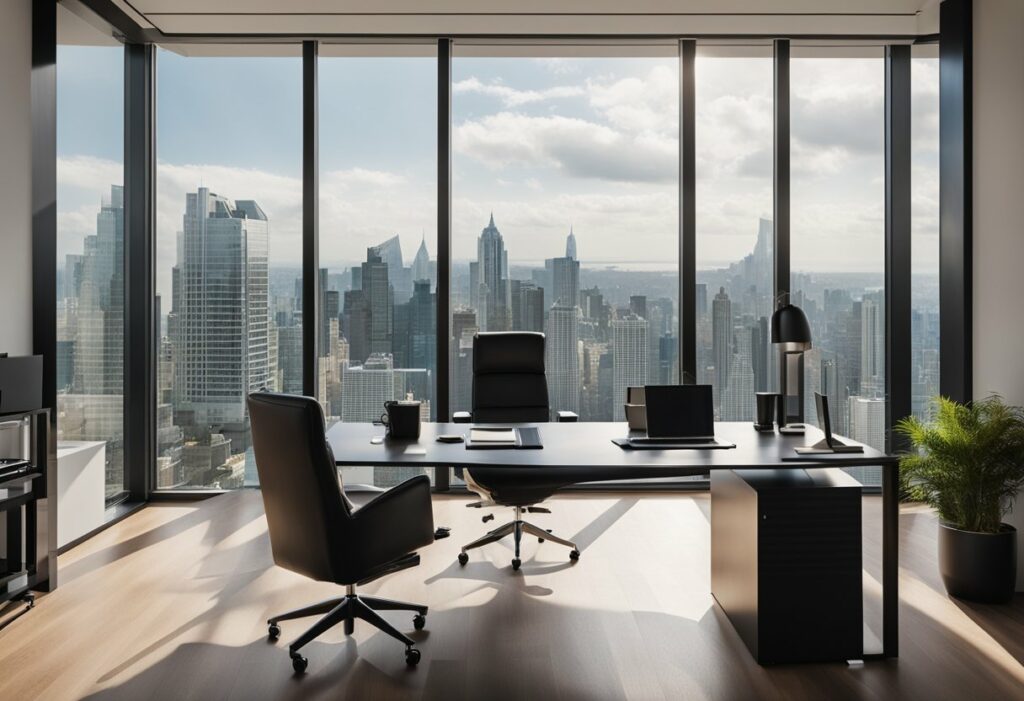Small CEO Office Design: Maximising Space and Style
If you’re a CEO, your office is a reflection of your position and status. A well-designed office can motivate you and boost your productivity. When it comes to small CEO office design, there are several essential elements to consider. You want to create a space that is functional, comfortable and visually appealing.
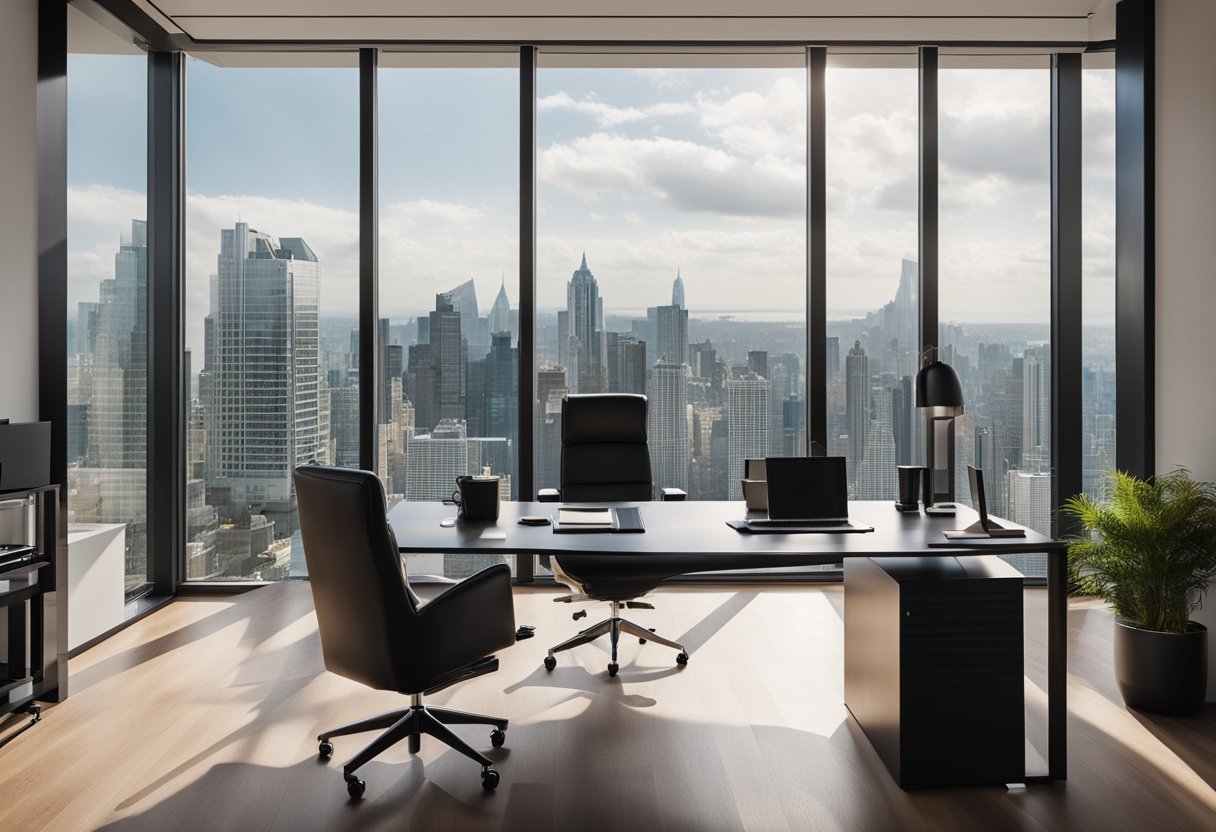
One of the most important aspects of small CEO office design is personalisation. Your office should reflect your personality and style. You can achieve this by incorporating personal items such as artwork, photographs, and mementoes. This will not only make your office feel more comfortable and welcoming, but it will also give visitors an insight into your personality and interests.
Key Takeaways
- A well-designed CEO office can boost productivity and motivation.
- Personalisation is key to creating a comfortable and welcoming space.
- Consider essential elements such as lighting, furniture, and storage when designing a small CEO office.
Essential Elements of Small CEO Office Design
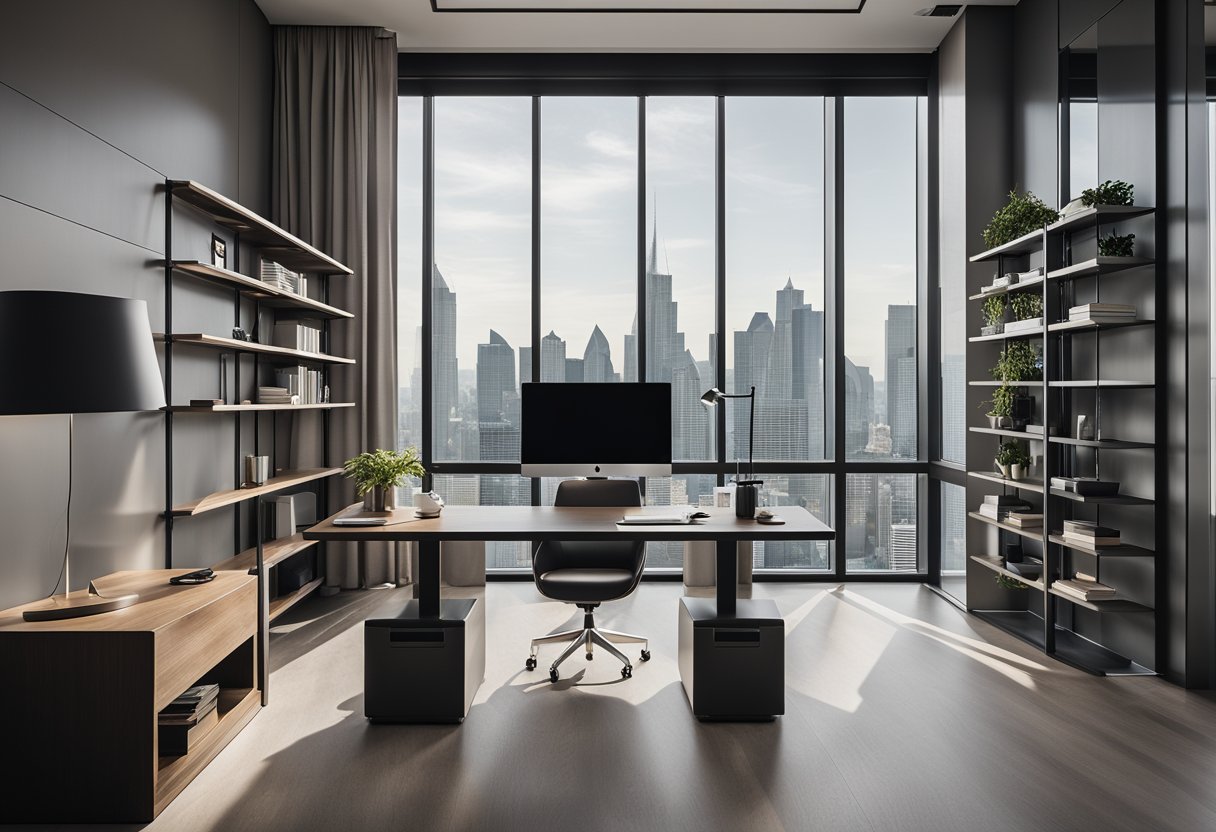
When designing a small CEO office, it’s essential to maximise natural light to create a bright and inviting space. Position your desk and work areas near windows to take advantage of the natural light, which can enhance the overall aesthetics and create a more comfortable and productive environment. Incorporating sheer curtains or blinds can help control the amount of light entering the room, providing flexibility and ensuring a pleasant working atmosphere.
Maximising Natural Light
Consider using light-coloured furniture and reflective surfaces to maximise the natural light in the room. Mirrors strategically placed can also help bounce light around the space, making it feel more spacious and airy.
Incorporating Functional Furniture
Opt for ergonomic furniture that combines style with functionality. Choose comfortable chairs and desks that promote good posture and overall well-being. Multifunctional furniture such as desks with built-in storage and adjustable shelving can maximise space and efficiency in a small CEO office.
Utilising Smart Storage Solutions
Utilise smart storage solutions to keep the office uncluttered and organised. Incorporate shelves and cabinets that not only serve a functional purpose but also add to the overall aesthetics of the space. Introduce decorative elements such as plants and lighting to create a stylish and productive small CEO office.
Personalising Your Executive Space
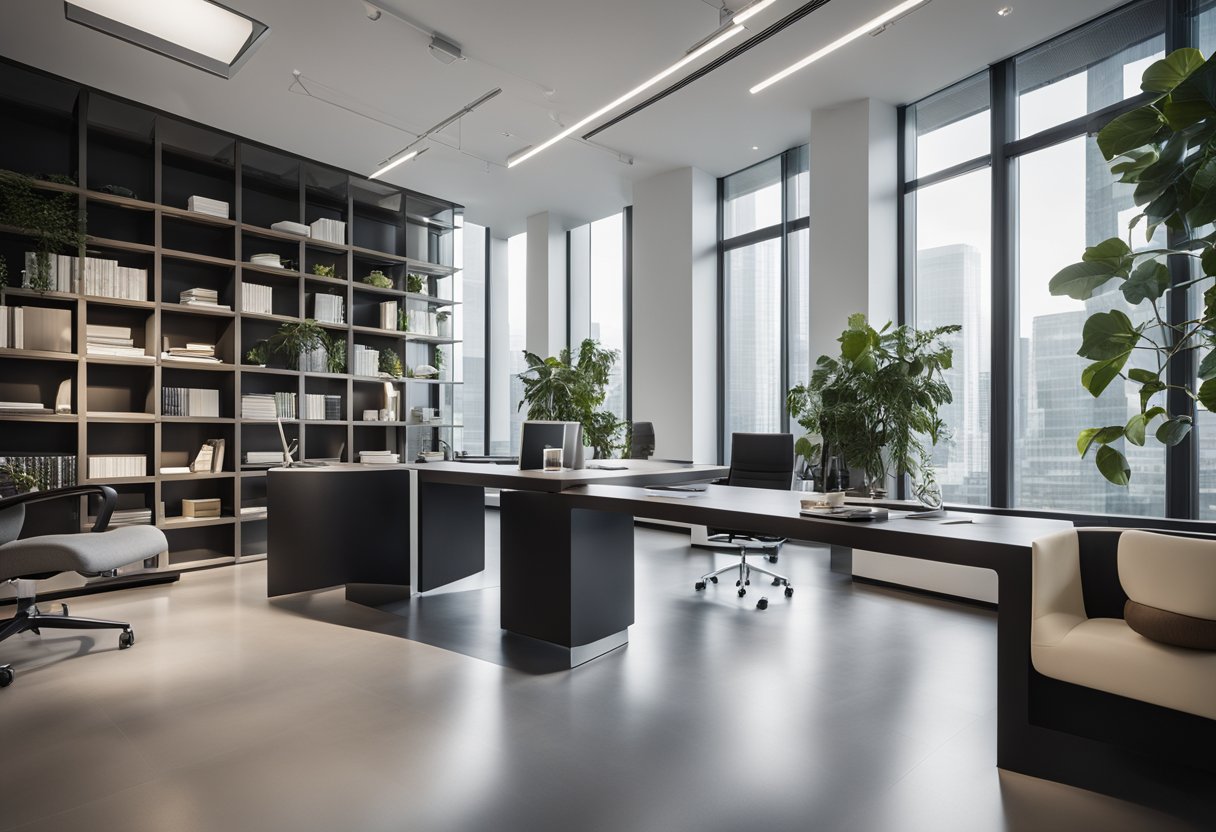
As a CEO, your office is not just a place to work, but also a reflection of your personality, reputation and success. Personalising your executive space can help infuse your personality with decor, while also creating a comfortable and aesthetically pleasing environment. Here are some executive office design ideas to help you create a space that reflects your vision, innovation and decision-making abilities.
Infusing Personality with Decor
Adding a personal touch to your executive office can make it feel more like home. Consider adding family photos, books, and documents that reflect your interests and hobbies. Displaying your pens and other office accessories can also add a touch of professionalism to your space.
Selecting a Style That Reflects Success
The style you choose for your executive office should reflect your success and authority. Traditional, contemporary, wooden or modern styles can all work, depending on your preference. Neutral colours, such as beige, grey and white, can create a calming effect, while wooden furniture and metal accents can add a touch of luxury.
Balancing Professionalism and Comfort
While you want your executive office to look professional, it should also be comfortable and well-suited to your needs. Adding bookcases, wall decor, paintings and indoor plants can help create a visually appealing and comfortable space. Sofas, coffee tables, large windows and curtains can also add a touch of comfort to your office. Artificial light and a floor lamp can help create a warm and inviting atmosphere.
Personalising your executive space can significantly impact your mental and emotional well-being, thereby influencing your performance and decision-making abilities. Balancing professionalism and comfort can help you create a space that is both aesthetically pleasing and functional.
Frequently Asked Questions
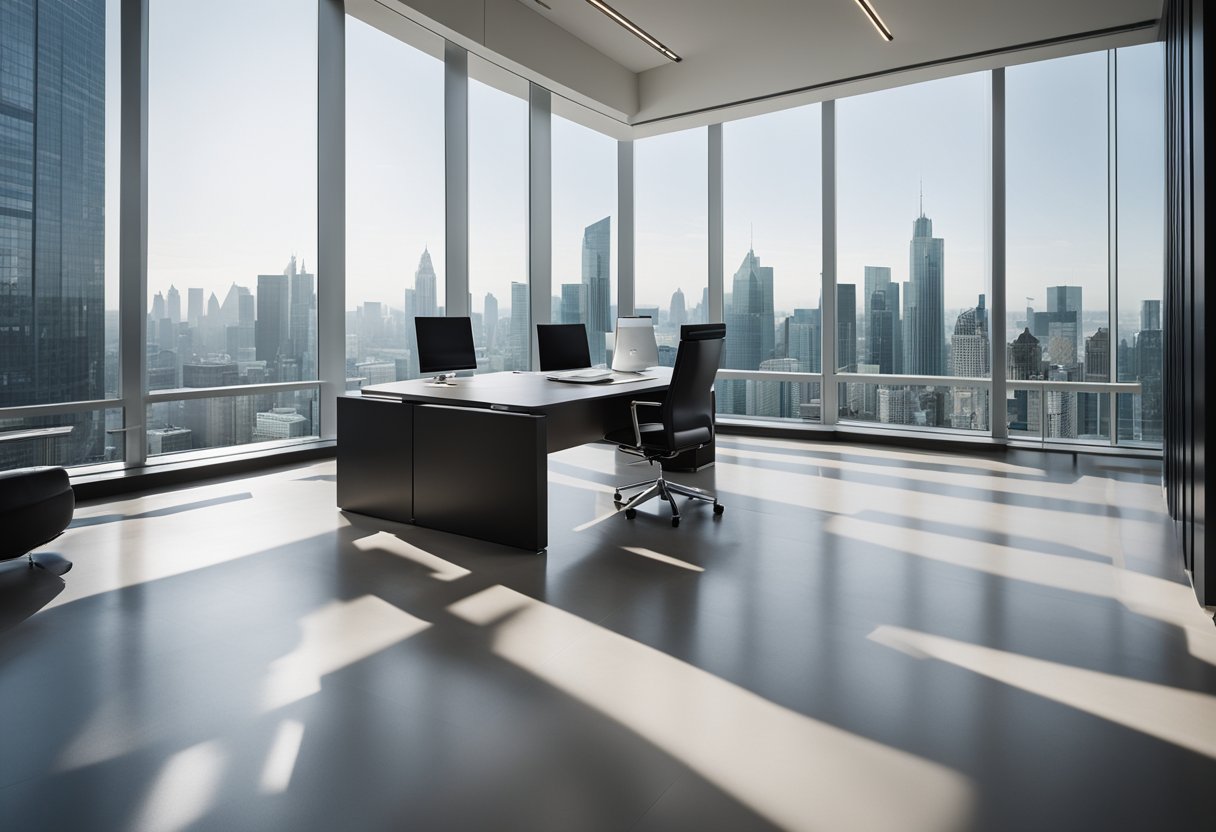
What are the top trends in modern luxury CEO office interiors?
Modern luxury CEO office interiors are all about creating a space that is both functional and stylish. Some of the top trends in modern luxury CEO office interiors include the use of natural materials such as wood and stone, the incorporation of smart technology, and the use of bold, statement pieces of furniture. Other popular trends include the use of neutral colour palettes, the incorporation of greenery and plants, and the use of high-quality lighting.
How can one maximise space in a compact executive office layout?
Maximising space in a compact executive office layout is all about being smart with your design choices. One way to maximise space is to choose multi-functional furniture, such as a desk with built-in storage or a chair that doubles as a storage unit. Another way to maximise space is to utilise wall space by installing shelves or cabinets. Additionally, choosing a minimalist design aesthetic can help to make a small space feel larger.
What features are essential for a high-end executive office?
A high-end executive office should be both functional and luxurious. Some essential features for a high-end executive office include a high-quality desk and chair, a comfortable seating area for guests, ample storage space, and high-quality lighting. Additionally, incorporating personal touches such as artwork or family photos can help to make the space feel more personalised and welcoming.
How can you personalise a CEO’s office to reflect their brand and style?
Personalising a CEO’s office to reflect their brand and style can be achieved in a number of ways. One way to do this is to incorporate the company’s branding and colours into the office design, such as by using branded artwork or incorporating the company’s logo into the design. Additionally, incorporating personal items such as awards, photographs, or personal mementos can help to make the space feel more personalised and reflective of the CEO’s style.
What are innovative ideas for the back wall design in a CEO’s office?
The back wall of a CEO’s office can be a great opportunity to make a statement and create a focal point in the space. Some innovative ideas for the back wall design in a CEO’s office include the use of bold, statement wallpaper or a large-scale piece of artwork. Additionally, incorporating shelving or built-in storage into the back wall design can help to maximise storage space while also creating a visually interesting design feature.
What are some creative decorating tips for a private executive office?
When decorating a private executive office, it’s important to balance functionality with style. Some creative decorating tips for a private executive office include incorporating statement pieces of furniture, such as a unique desk or chair, incorporating artwork or sculptures, and using plants or greenery to add visual interest and a sense of calm to the space. Additionally, incorporating personal items such as family photos or personal mementos can help to make the space feel more personalised and reflective of the CEO’s style.

